Best Calisthenics for 60 Year Olds to Do at Home
If you’re over 60 years old – I’m sure you remember doing calisthenics in PE class!
As much as I hated them, I have found them to be extremely helpful with keeping me active and healthy into my 60’s.
So, if you’re trying to find exercises that are safe and effective, you may want to consider going back to doing calisthenics.
These bodyweight exercises are perfect for older adults!
Not only can they improve strength, flexibility, and overall fitness, but they can also be done from the comfort of your home, with or without equipment.
The beauty of calisthenics is that they can be tailored to any fitness level.
Whether you’re a complete beginner or a seasoned fitness enthusiast like me, there are exercises to challenge and help you meet your goals.
By including these exercises into your daily routine, you’ll be able to improve your balance, coordination, and range of motion.
But it’s not just physical benefits from calisthenics. They also have a positive impact on your mental health.
Exercise has been proven to decrease stress, improve your mood, and improve cognitive function.
As we age, it’s so important to take care of both our physical and mental well-being, and calisthenics offers a fantastic way to do just that.
So, let’s dive in and explore the best calisthenics for 60-year-olds to do at home.
Get ready to feel great!
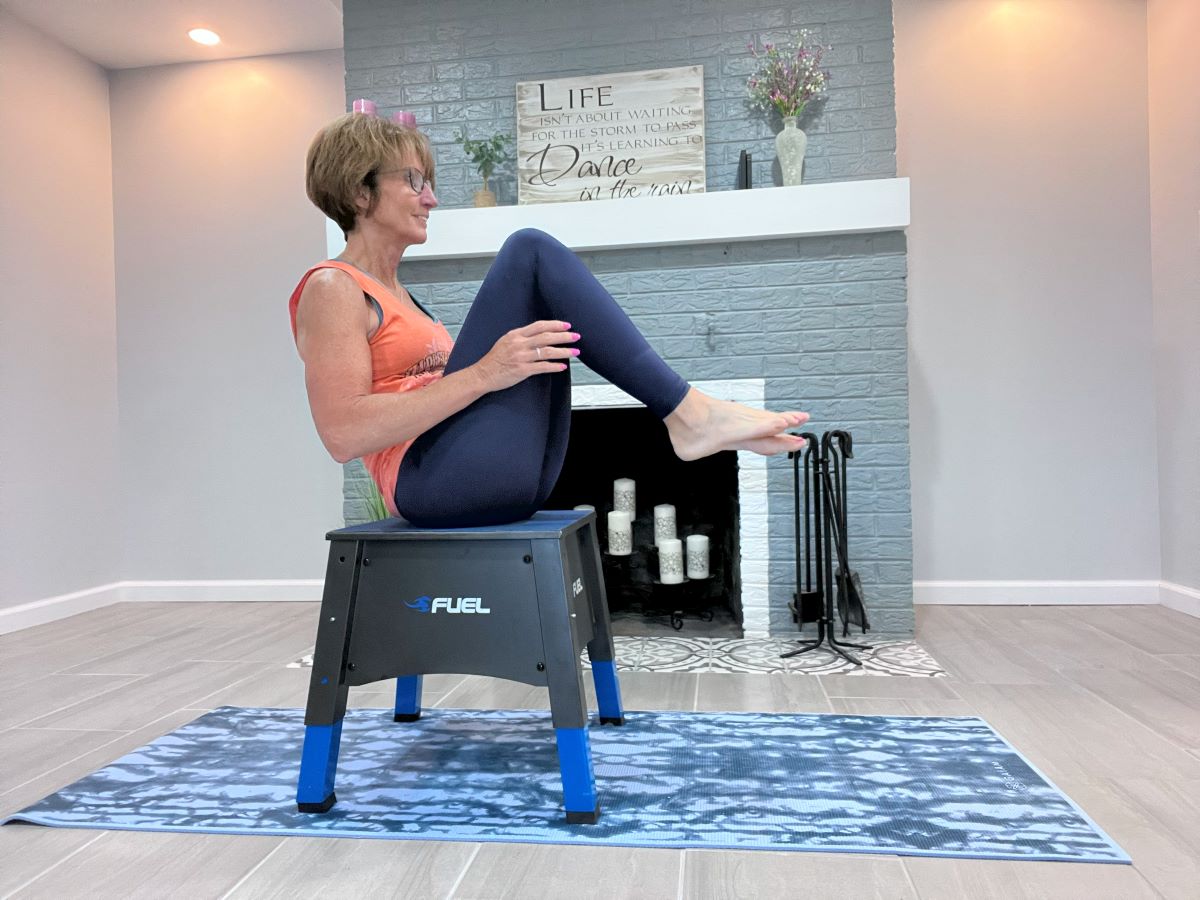
This post may contain affiliate links. As an Amazon Associate, I earn from qualifying purchases. This means I may earn a commission at no extra cost to you should you choose to make a purchase using my link.
Understanding Calisthenics for 60 Year Olds
Calisthenics is the ultimate exercise for improving strength, flexibility, and overall fitness without the need for fancy equipment.
These exercises offer a ton of benefits for people of all ages, including fabulous 60-plus-year-olds who want to stay active and healthy.
Bodyweight exercises are low-impact and you can modify them to work with your fitness level and abilities.
The basic movements, like push-ups, squats, lunges, and planks, are some simple exercises that target different muscle groups.
Whether your goal is to tone up, get stronger, or simply stay fit, calisthenics can be customized to meet your needs.
In order to progress with your calisthenics, you will need to gradually increase the difficulty of the exercises by adding more reps, changing the tempo by allowing less resting time, or modifying the movement.
This allows you to continue to improve without plateauing.
With the right workout plan and progressions, you’ll be amazed at how much strength, flexibility, and overall fitness you can achieve.
Safety Measures and Precautions
As a 60-year-old looking to start calisthenics at home, safety should be your top priority.
Before you begin any exercise routine, it’s important to consult with your doctor to make sure that you are healthy enough to begin doing physical activity.
Injuries are a common occurrence in calisthenics, but you can avoid them by taking some basic precautions.
Always warm up before exercising and cool down afterward to prevent muscle strains and sprains.
Stop doing an exercise if you have pain during an exercise, it’s not worth an injury!
Modify exercises to fit your level of fitness and ability.
Don’t try to do advanced exercises if you are a beginner, and always be sure to use proper form to prevent injury.
You can also modify exercises to make them easier or more challenging, depending on your goals. (I do this all of the time!)
When performing calisthenics at home, make sure you have a safe and comfortable space to exercise.
Clear any obstacles from the area and use the proper equipment for your workout such as a yoga mat or maybe resistance bands or specific weights such as ankle weights.
Getting Started: Beginner Exercises
If you’re a 60-year-old looking to start a calisthenics program at home, congratulations!
Just remember that it’s important to start slowly and choose exercises that are appropriate for your fitness level.
Here are some beginner exercises to get you started:
Wall Push-ups
Push-ups are a classic exercise that works your chest, shoulders, and triceps.
But they can be challenging if you’re new to them. Trust me, I still cheat on some days!
But don’t worry. You can start with wall push-ups. They are a bit easier since you don’t have to lift your entire body.
To do these:
- Stand about two feet away from a wall.
- Place your hands on the wall at shoulder height.
- Lean in towards the wall, bending your elbows.
- Push yourself back to the starting position and repeat.
Squats
Squats are a great exercise for your legs and glutes.
Start with air squats, which are squats without any weights.
To do these:
- Stand with your feet shoulder-width apart.
- Lower your body as if you were sitting back into a chair.
- Keep your chest up and your knees over your toes.
- Push through your heels to stand back up.
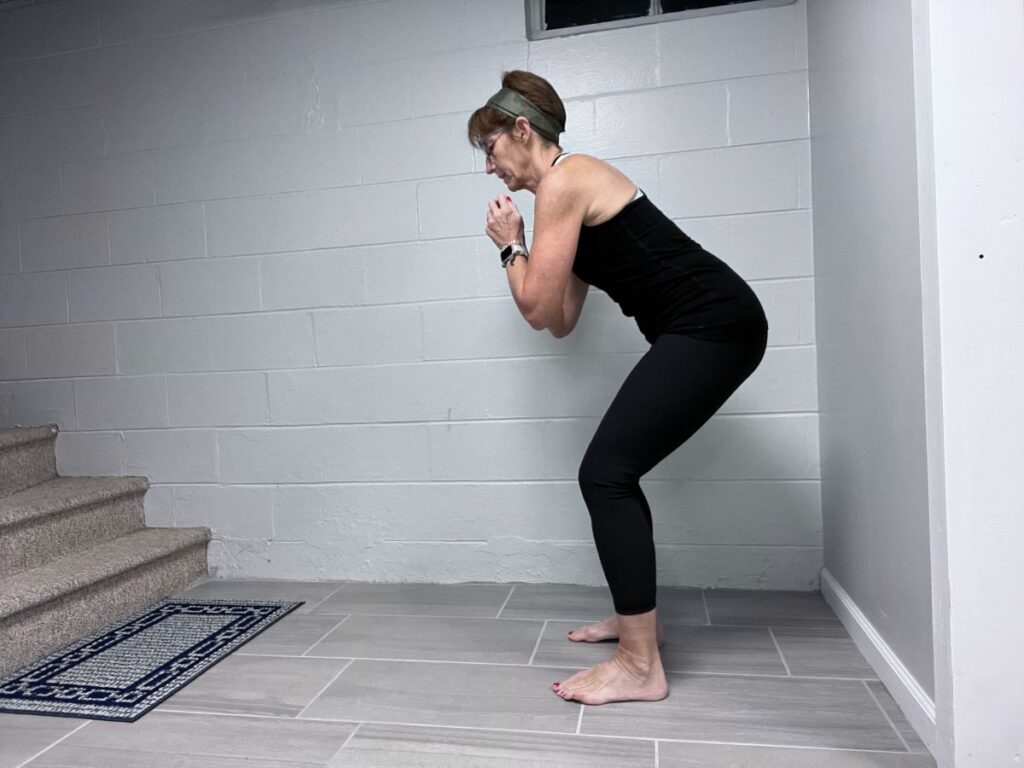
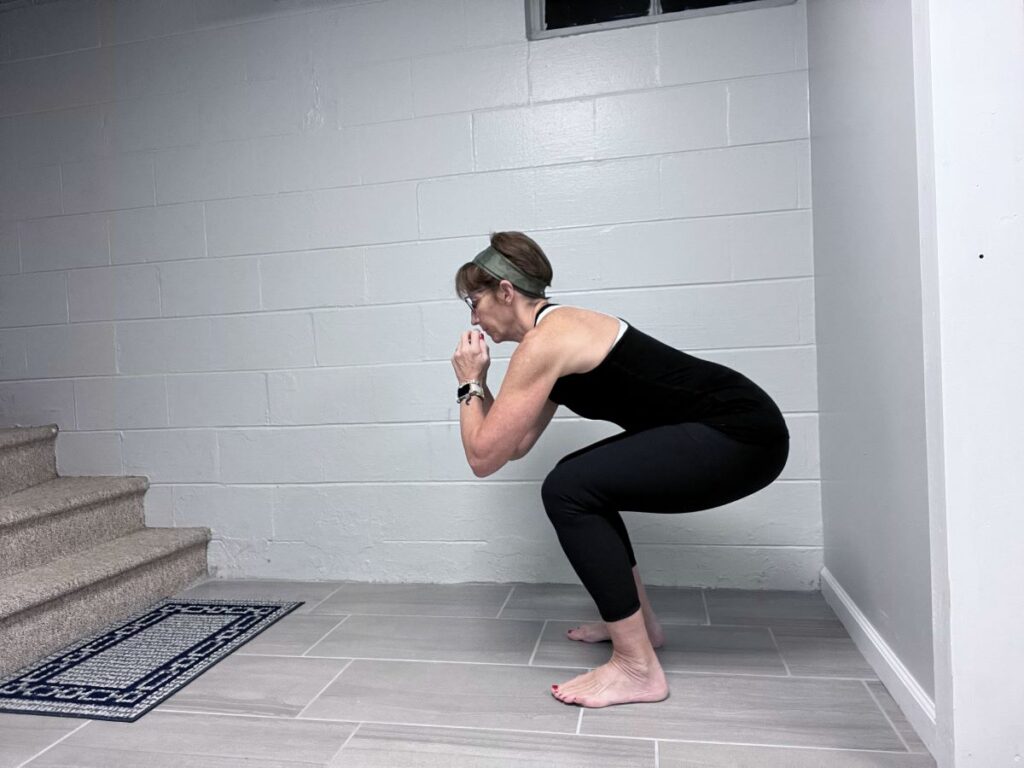
Lunges
Lunges work your legs and glutes and also help improve your balance.
Start with alternating lunges.
To do these:
- Step forward with your left foot.
- Lower your body until your left knee is at a 90-degree angle.
- Push through your left heel to stand back up, then repeat on the right side.
Jumping Jacks
Jumping jacks are a great way to get your heart rate up and improve your cardiovascular health.
Start with a few sets of 10 jumping jacks.
Plank
Planks are a great exercise for your core.
I absolutely love doing planks, but I will tell you that they are harder than they look!
Start with a basic plank.
To do these:
- Get into a push-up position.
- Do NOT lower down.
- Hold your body in a straight line from your head to your heels.
- Keep your abs tight and hold for as long as you can.
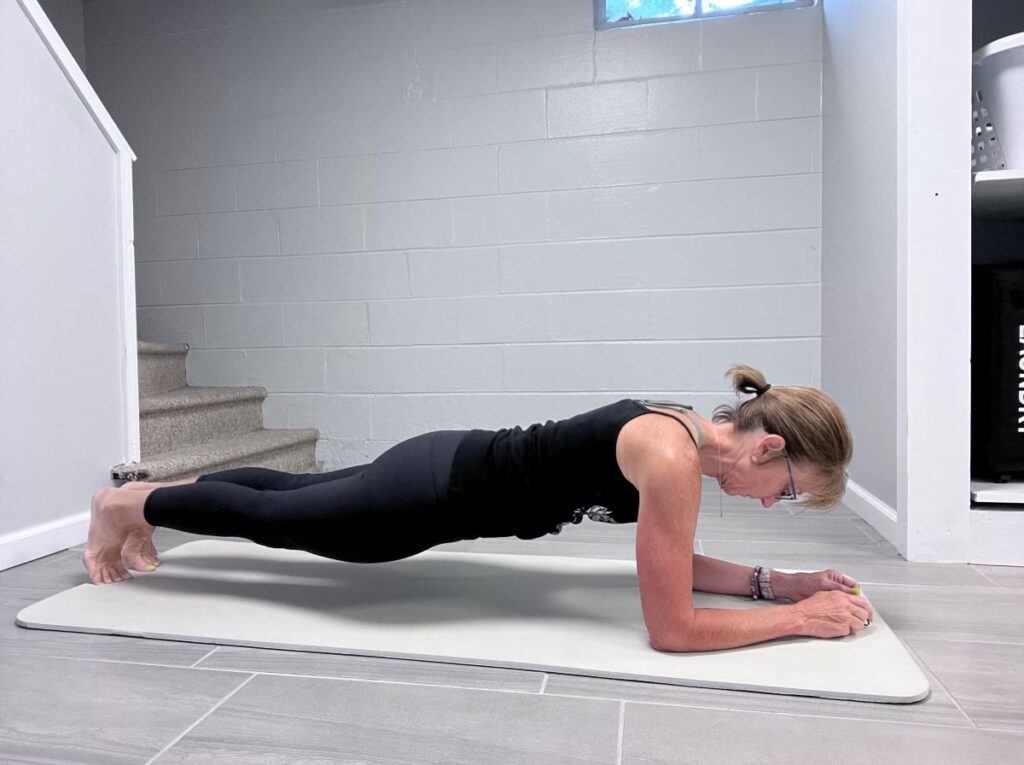
Sit-ups and Crunches
Sit-ups and crunches are great exercises for your abs.
Start with basic crunches.
To do these:
- Lie on your back with your knees bent and your feet flat on the floor.
- Place your hands behind your head and lift your shoulders off the ground.
- Keep your lower back on the floor.
- Lower back down and repeat.
READ MORE: – 11 Of The Best Core Exercises For Older Adults: How To Be A Stronger, Healthier You | Simply Aging Healthy
Remember, if you’re new to exercise, it’s important to start slowly and listen to your body.
If an exercise hurts or feels uncomfortable, stop and try something else.
And if you’re starting a new exercise program, it’s always a good idea to talk to your doctor first.
Intermediate Level Calisthenics for 60-Year-Olds
Have you mastered the beginner exercises and now feel that you are able to take it up a notch?
No problem! Intermediate-level exercises can challenge you while still being manageable.
These exercises require a little more strength and coordination than beginner exercises, but don’t worry if you’re not ready yet, you will get there if you keep working!
Assisted Negative Pull-Ups
One great intermediate exercise is the pull-up.
If you have a pull-up bar at home, you can start by doing assisted negative pull-ups.
For these, you will also need a resistance band.
To do these:
- Grab onto the bar with your palms facing away from you.
- Keep your hands shoulder-width apart.
- Place one foot in the loop band so that it decreases your weight.
- Start at the top with your chin is above the bar.
- Hold as long as possible.
- Slowly lower yourself down.

Push Ups
If you feel good about the wall push-ups then it’s time to take it to the floor.
To do these:
- Start in a plank position with your hands shoulder-width apart.
- Keep your feet together.
- Lower yourself down until your chest touches the ground
- Push yourself back up.
If this is too difficult, try doing push-ups on your knees.
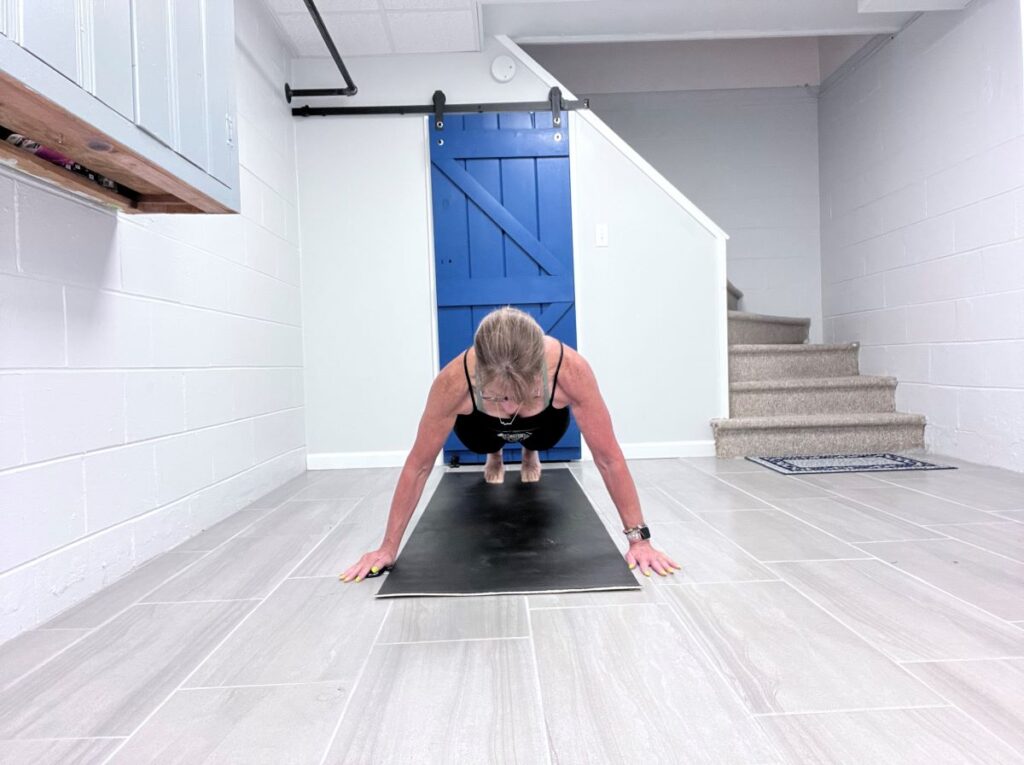
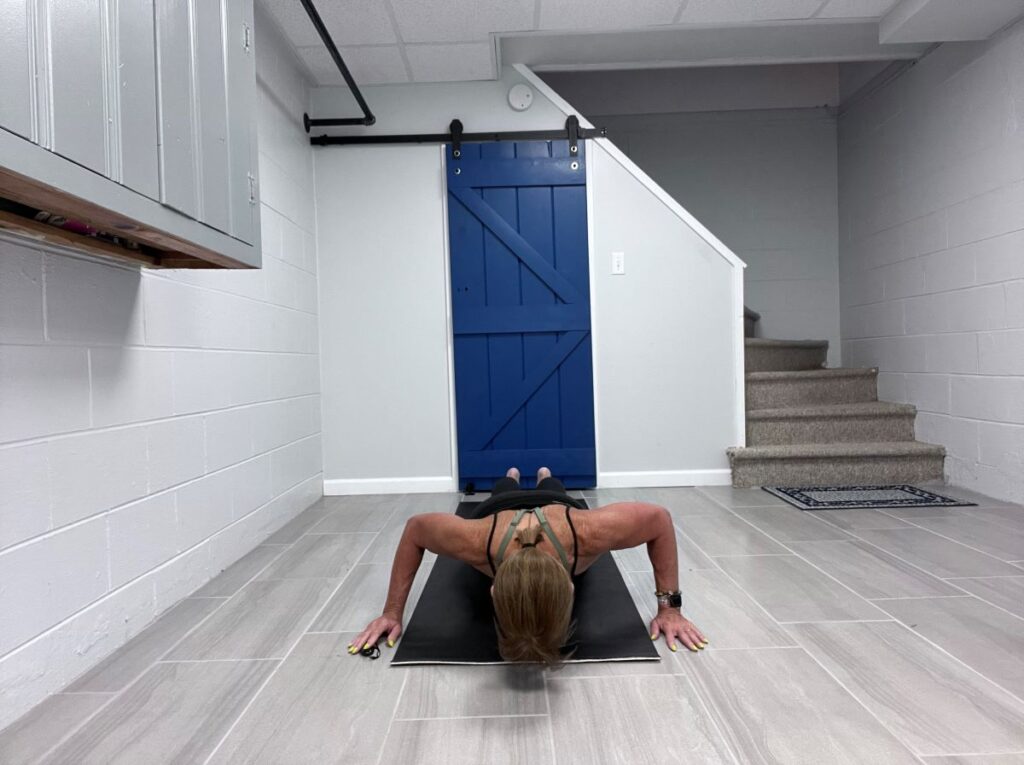
Tricep Dips
Tricep dips are a great intermediate exercise.
You will need 2 chairs or a bench.
To do these:
- Sit on the bench facing forward.
- Leave your hands on the bench facing down.
- Move your bottom off the bench.
- Lower yourself down until your arms are at a 90-degree angle.
- Then, push yourself back up.
You can also do these with dip bars.
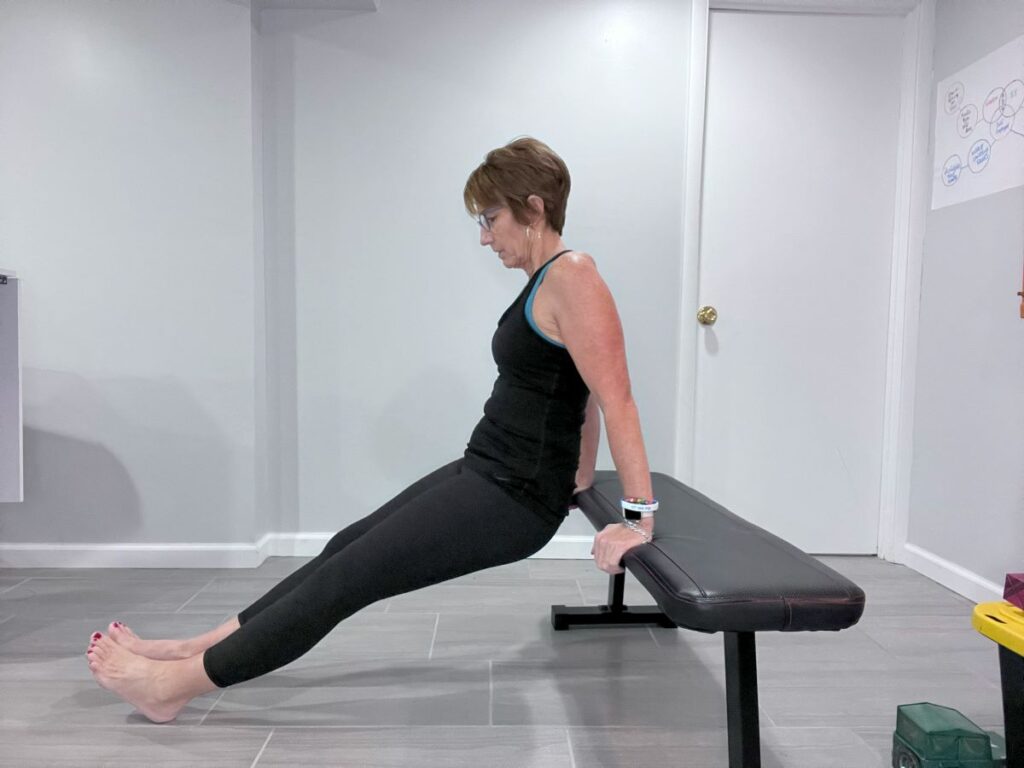
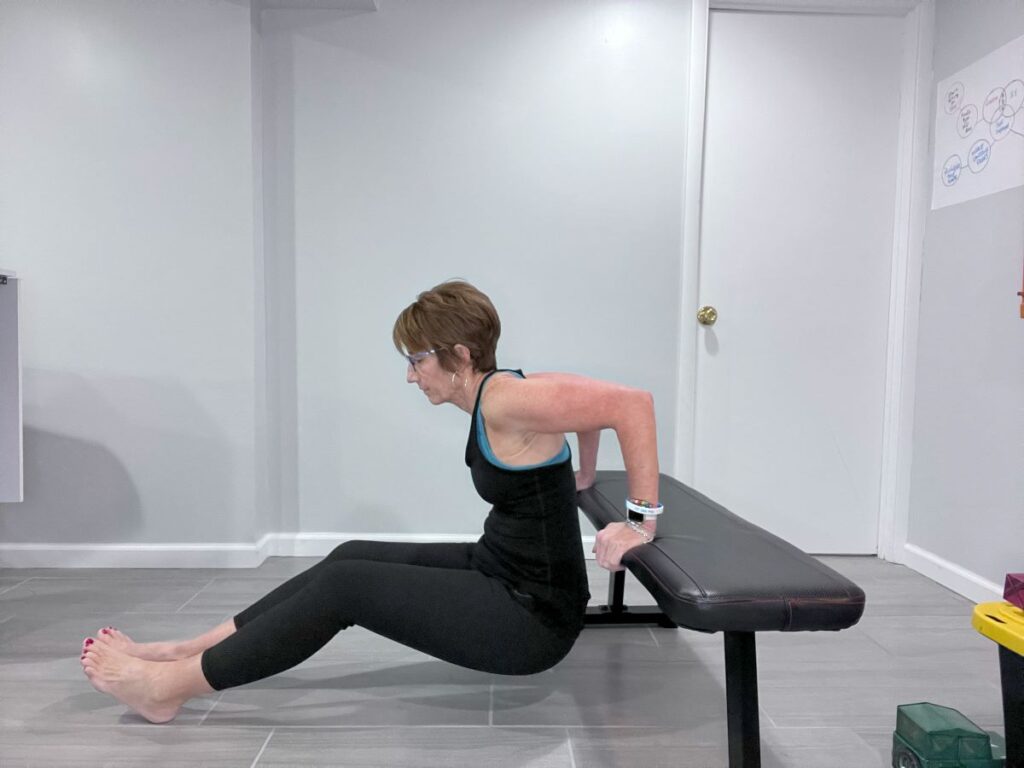
Weighted Squats
Squats are a great exercise for your legs and glutes.
To do these:
- Start with either weight in both hands or in front of you at your chest.
- Stand with your feet shoulder-width apart.
- Lower your body as if you were sitting back on a chair.
- Keep your chest up and your knees over your toes.
- Push through your heels to stand back up.
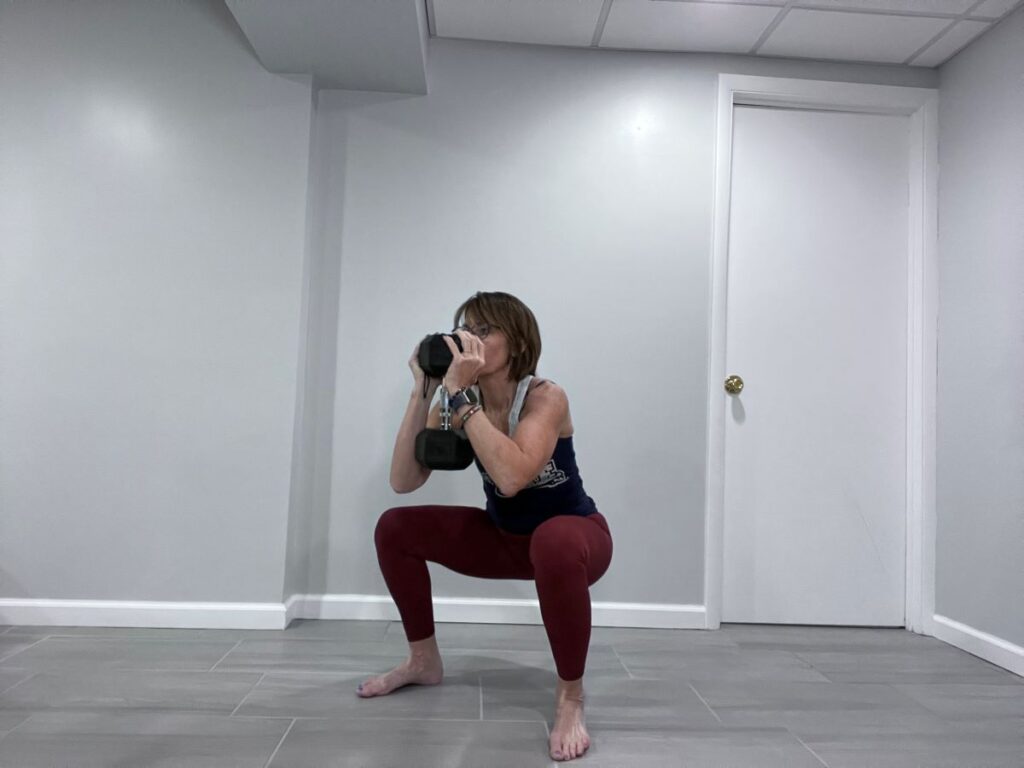
READ MORE: 7 Easy Squats For Aging Knees: Tips And Techniques | Simply Aging Healthy
Including intermediate-level exercises in your calisthenics routine can help you continue to build strength and improve your fitness.
Remember to always listen to your body and never push yourself too hard.
Advanced Level Exercises
If you have been practicing calisthenics for some time and feel comfortable with the basics, it might be time to challenge yourself with some advanced exercises.
These moves require more strength, balance, and coordination, but they can also help you build muscle mass and endurance.
Pull Ups
One of the most challenging exercises is the pull-up, I personally struggle with these!
I always stick with assisted pull-ups – thank you arthritis!
A pull-up requires you to lift your entire body weight using only your upper body muscles.
To do this exercise:
- Grab onto the bar with your palms facing away from you.
- Keep your hands shoulder-width apart.
- Pull yourself up so that your chin is above the bar.
- Then lower yourself back down.
Once you can do a few reps with good form, you can try variations like chin-ups, wide-grip pull-ups, or one-arm pull-ups.
READ MORE: 7 Benefits of Pullups, Plus Beginner and Advanced Options (healthline.com)
Pistol Squats
Pistol squats are a challenging leg exercise that requires balance and strength.
To perform this move:
- Stand on one leg with your other leg extended out in front of you.
- Slowly lower yourself down into a squat position.
- Keep your extended leg off the ground.
- Push back up to the starting position and repeat on the other leg.
If you find these challenging, you may want to start with the assist of a bench or chair. I still use a bench when doing these.
Exercise Modifications for Specific Conditions
As a 60-something-year-old, I understand that some of us may have specific conditions limiting our ability to do certain exercises.
Trust me, I find myself moaning and groaning with some of them!
But this should not keep you from staying active and healthy.
In fact, there are several modifications you can make to exercises to work around medical conditions and still get the benefits.
If you’re someone that suffers from joint pain or arthritis, low-impact exercises like yoga, Pilates, walking, swimming, or cycling can be great alternatives to high-impact exercises like jumping jacks or pull ups.
For those of us with balance or coordination issues, you may want to think about doing exercises that focus on improving these skills.
Simple exercises like standing on one leg or walking heel-to-toe can help improve balance and coordination over time.
READ MORE: 14 Of The Best Balance Exercises For Ankle: Strengthening Seniors | Simply Aging Healthy
Remember to watch your form. It’s very important in preventing injury and maximizing the benefits of exercise.
If you’re not sure if you are using the proper form, you could consider meeting with a personal trainer or physical therapist.
For those with specific conditions such as osteoporosis, scoliosis, or herniated discs, modifications to exercises may be necessary.
For example, with osteoporosis, you should avoid exercises that involve twisting or bending forward.
If you have scoliosis, you may need to modify exercises that require twisting or unilateral or asymmetrical exercises.
Fitness Goals and Progress Tracking
When starting a new fitness routine, it’s important to set clear goals for yourself. (I’m big on setting goals!)
This helps you stay motivated and focused on your progress.
As an older adult looking to improve your fitness level, your goals may be different than a younger athlete. And that’s okay!
However, it’s still important to challenge yourself and push yourself to improve.
One of my fitness goals is to increase my strength with resistance training.
Calisthenics exercises like push-ups, squats, and lunges are great for building strength without any equipment.
But if you’re like me and want to push it up a notch, you might want to try using resistance bands, free weights, or a weighted vest.
This adds resistance and helps me build more muscle.
Tracking my progress is also important for staying motivated.
I keep a log of my workouts and record the number of reps and sets I complete for each exercise. This way I can change my goals when needed so that I don’t plateau.
In addition to strength training, I also enjoy cycling for cardio. I set a goal to cycle at least 3 times a week for 30 minutes.
This helps improve endurance and overall fitness level.
Setting clear fitness goals and tracking your progress is key to staying motivated and seeing results.
Whether you’re a seasoned athlete or just starting out, it’s important to challenge yourself and push yourself for improvement.
Nutrition and Fatigue Management
Proper nutrition and controlling fatigue are also very important when it comes to calisthenics.
Make sure that you get plenty of protein because this helps to build and repair muscles.
Getting enough sleep and taking rest days when needed can help you manage fatigue.
It’s still a work in progress for me to get enough sleep but I keep trying!
On the other hand, I could do a rest day every day!
I’m just kidding, but I do have to talk myself into workouts on some days!
Listen to your body and change up your workouts as needed.
By building muscle through bodyweight exercises, you can increase your metabolism and burn more calories even when you’re not working out.
Doing Calisthenics Over 60
Overall, there is a lot of great calisthenics for those of us over 60 to practice at home.
From planks and dips to squats and wall push-ups, these exercises are beneficial for maintaining physical health and building strength.
Being creative with your exercises is also important because it will help increase your motivation and may show you new movements that can turn into exercises you can’t live without.
So, whatever calisthenics you choose to do at home, just remember to stay safe and take breaks whenever necessary.
Now it’s time for me to hear from you: I would love for you to share your favorite calisthenics exercise with me!
